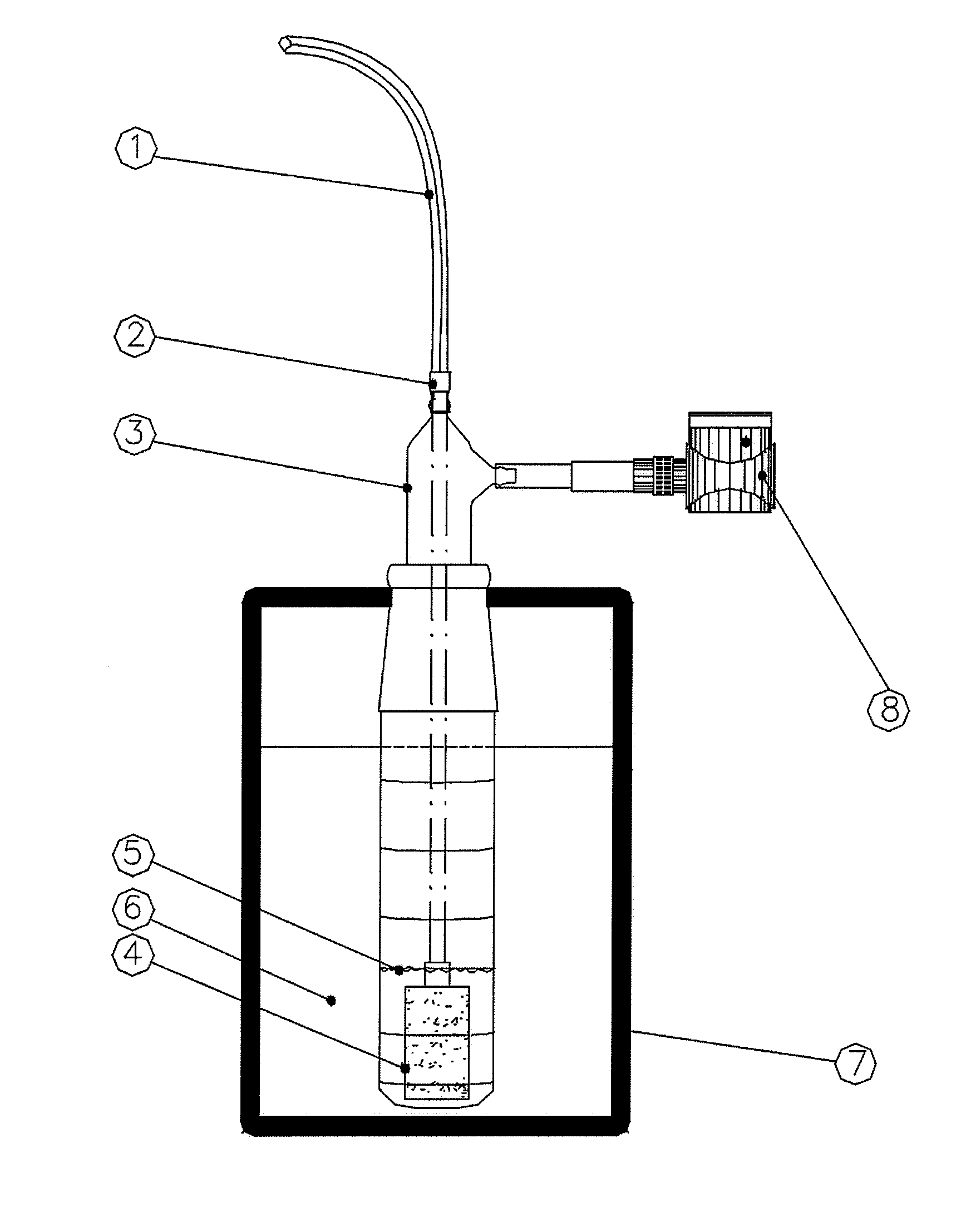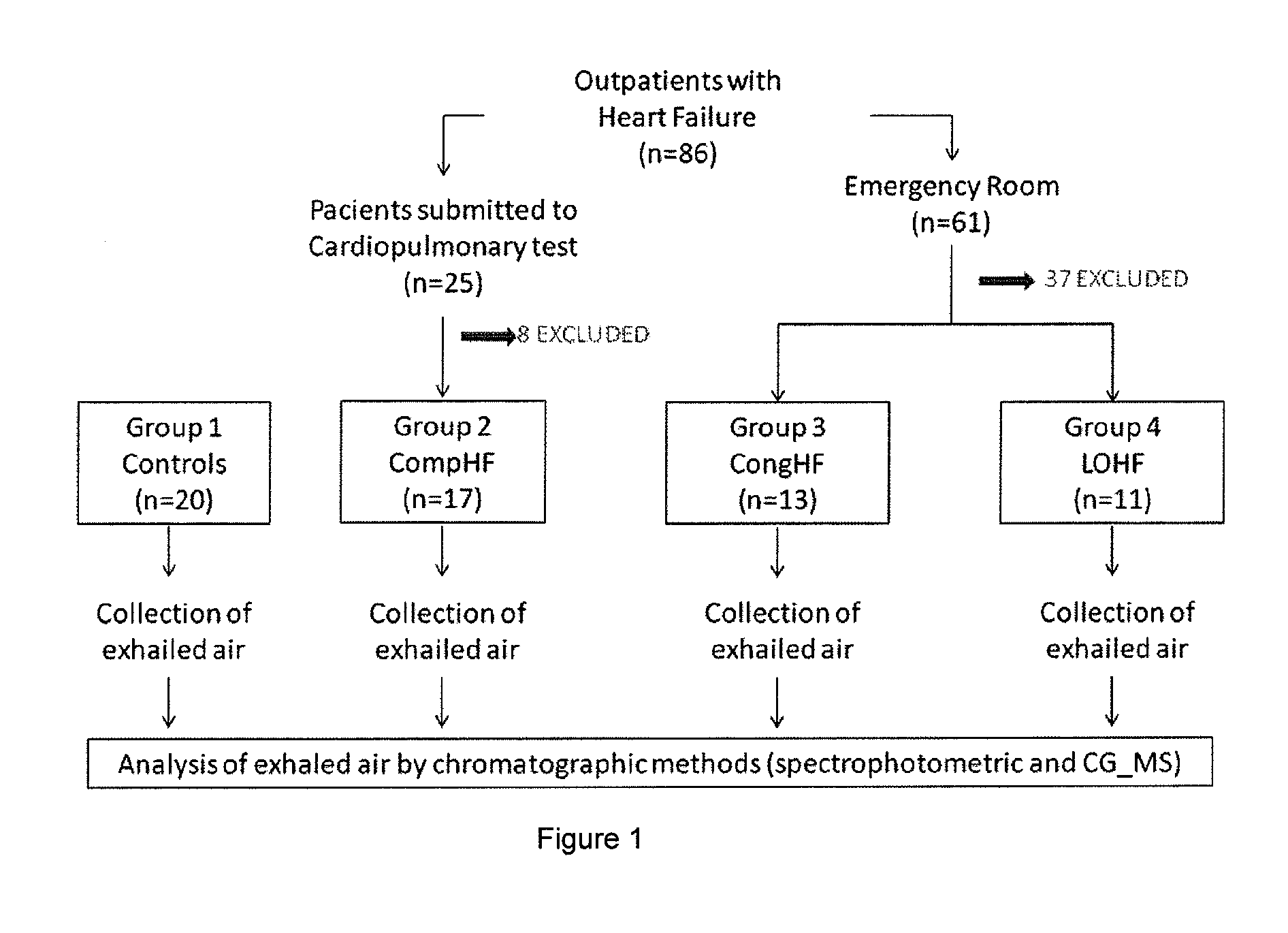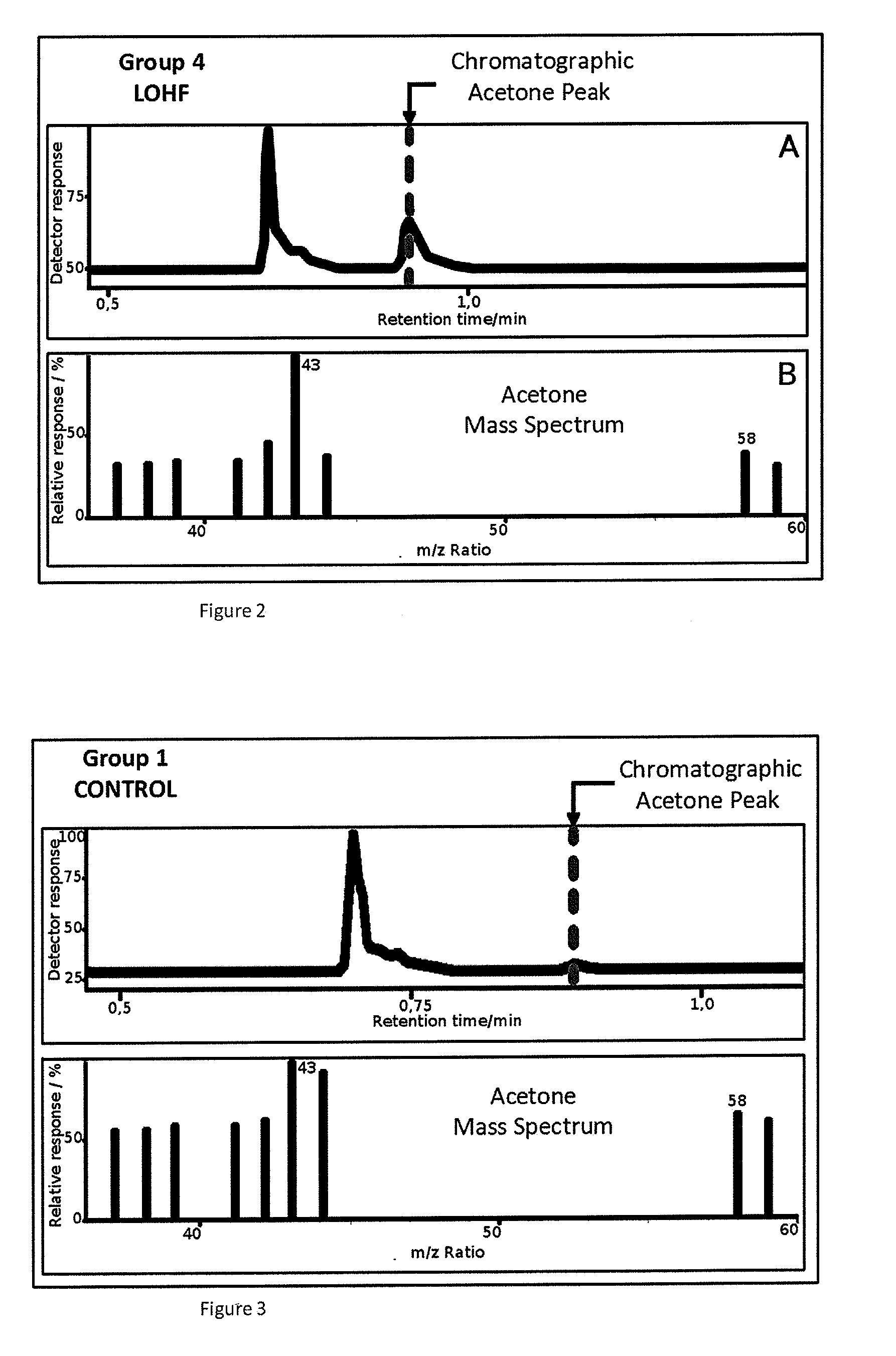Non-invasive method for diagnosing the severity of heart failure, use of a biomarker for diagnosing decompensated heart failure, collector device for the heart failure biomarker from exhaled breath and a diagnosis kit
a biomarker and non-invasive technology, applied in the field of heart failure severity diagnosis, can solve the problems of high cost, complex measurement, and inability to use all of them in a systematic way to stimulate survival, and achieve the effect of increasing the retention efficiency of biomarkers
- Summary
- Abstract
- Description
- Claims
- Application Information
AI Technical Summary
Benefits of technology
Problems solved by technology
Method used
Image
Examples
Embodiment Construction
[0062]The object of the present invention is a non-invasive method of diagnosing the severity of heart failure. More specifically, the present method is capable of diagnosing decompensated heart failure by the collection, detection and quantification of a specific biomarker. The present invention presents embodiment examples which prove the efficiency of the present non-invasive diagnosis method compared to the currently existing invasive methods. The differentiating factor of the present diagnosis method comprises the diagnosis of the severity of heart failure and by being a non-invasive method, it confers ease of collection and comfort to the patient, and can widely be applied in hospitals.
[0063]An additional object of the present invention is a biomarker for diagnosing and prognosticating decompensated HF. The biomarker of said diagnosis method is acetone. This biomarker has never been cited in literature as an indicator of the severity of heart failure, more specifically decompe...
PUM
| Property | Measurement | Unit |
|---|---|---|
| Temperature | aaaaa | aaaaa |
| Temperature | aaaaa | aaaaa |
| Temperature | aaaaa | aaaaa |
Abstract
Description
Claims
Application Information
 Login to View More
Login to View More - R&D
- Intellectual Property
- Life Sciences
- Materials
- Tech Scout
- Unparalleled Data Quality
- Higher Quality Content
- 60% Fewer Hallucinations
Browse by: Latest US Patents, China's latest patents, Technical Efficacy Thesaurus, Application Domain, Technology Topic, Popular Technical Reports.
© 2025 PatSnap. All rights reserved.Legal|Privacy policy|Modern Slavery Act Transparency Statement|Sitemap|About US| Contact US: help@patsnap.com



